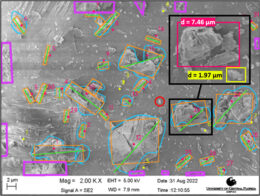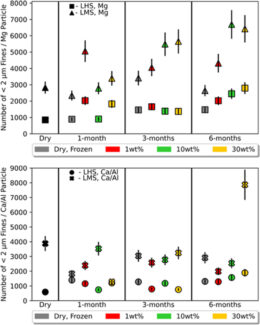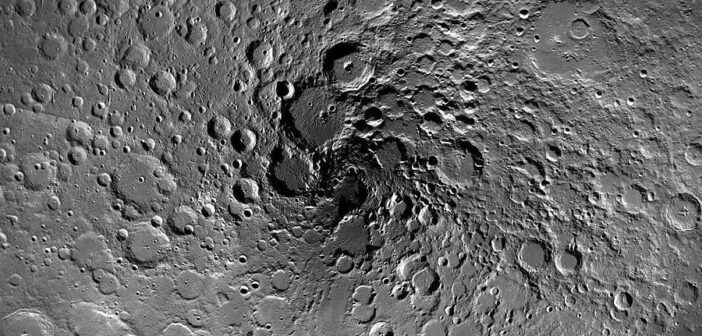On Earth, rocks and soil are weathered by wind and water, but what weathers surfaces on the Moon? New research investigates how ice might alter lunar soil in permanently shadowed lunar craters.
The Importance of Lunar Soil

Photograph of the sunlit rim of Shackleton crater, a crater at the Moon’s south pole. The interior of this crater never receives direct sunlight. [NASA/GSFC/Arizona State University]
NASA’s upcoming Artemis missions will bring astronauts to the lunar south pole, which is dotted with steep-sided craters that lie in permanent shadow. Because some of these craters are thought to harbor water ice, it’s important to know if the ice is likely to weather the lunar surface material, creating an abundance of harmful and irritating fines.
A Lunar Experiment on Earth
Autumn Shackelford (University of Central Florida) and collaborators examined how lunar regolith might be weathered by water ice. If a tiny bit of liquid water seeps into fine cracks in lunar surface particles, the expansion of the water as it freezes will widen the cracks. The mechanical stress caused by this expansion may cause the crack system to grow, potentially reshaping the particle.

An image of a sample that contained 30% water by weight and was frozen for 6 months. The numbering and outlines reflect the counting and characterization of individual particles and clumps of particles. Click to enlarge. [Shackelford et al. 2024]
The team varied the amount of water added to the samples from no water — the control samples — to 30% water by weight, and left the samples in a freezer for 1, 3, or 6 months. After the samples finished hibernating, the team characterized the size and shape of the particles, counted the number of fine particles, and took spectra to search for possible spectral changes.
Water Weathering

The number of fines per particle, as a function of time spent in the freezer, amount of water, and type of particle. Click to enlarge. [Shackelford et al. 2024]
With humans potentially exploring lunar regions where water ice lingers in shadowy craters, this work provides an important first look at how ice plays a role in producing fine particles. Future astronauts, take heed!
Citation
“Morphological and Spectral Characterization of Lunar Regolith Breakdown Due to Water Ice,” A. Shackelford et al 2024 Planet. Sci. J. 5 1. doi:10.3847/PSJ/ad0041

